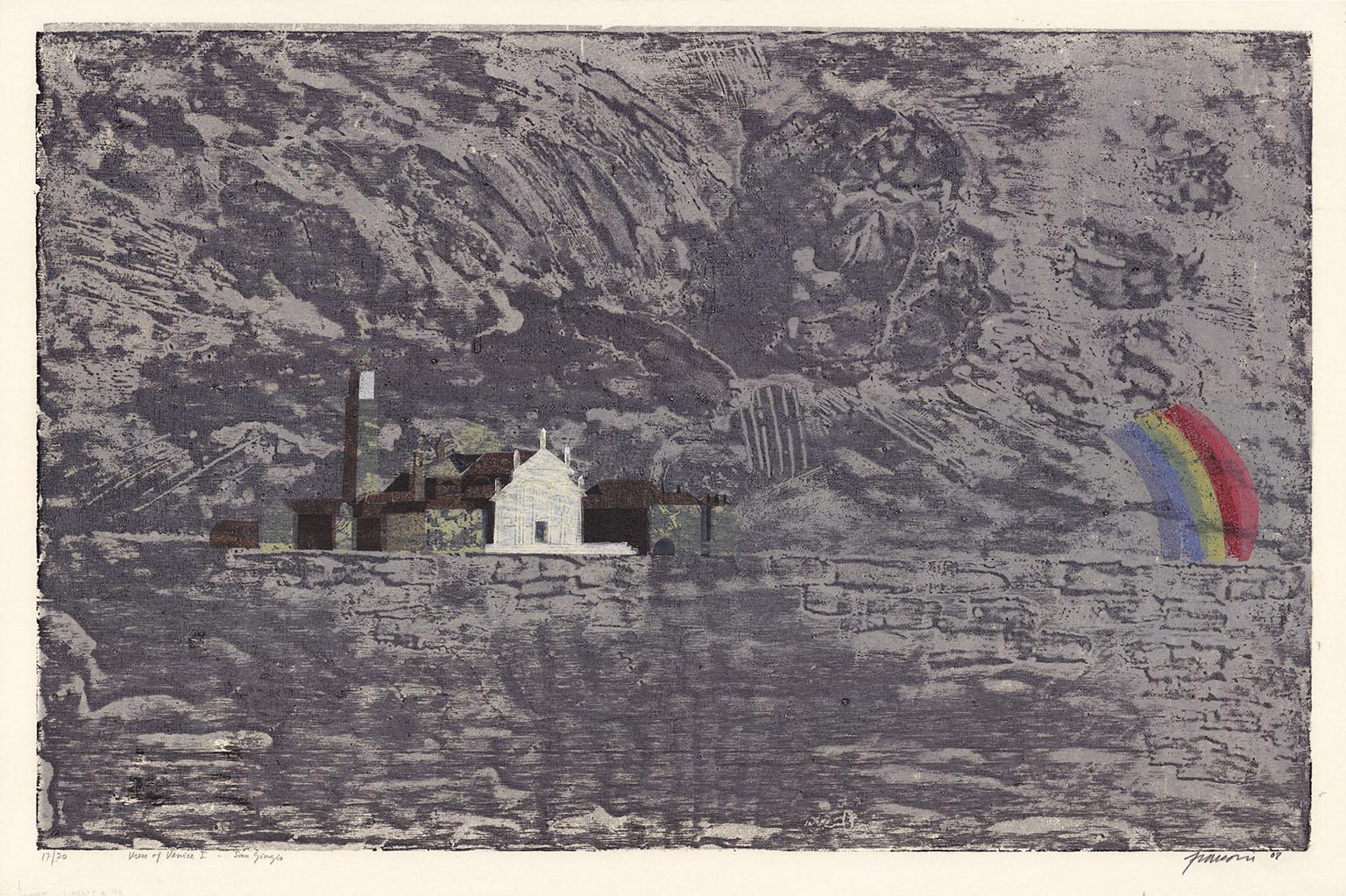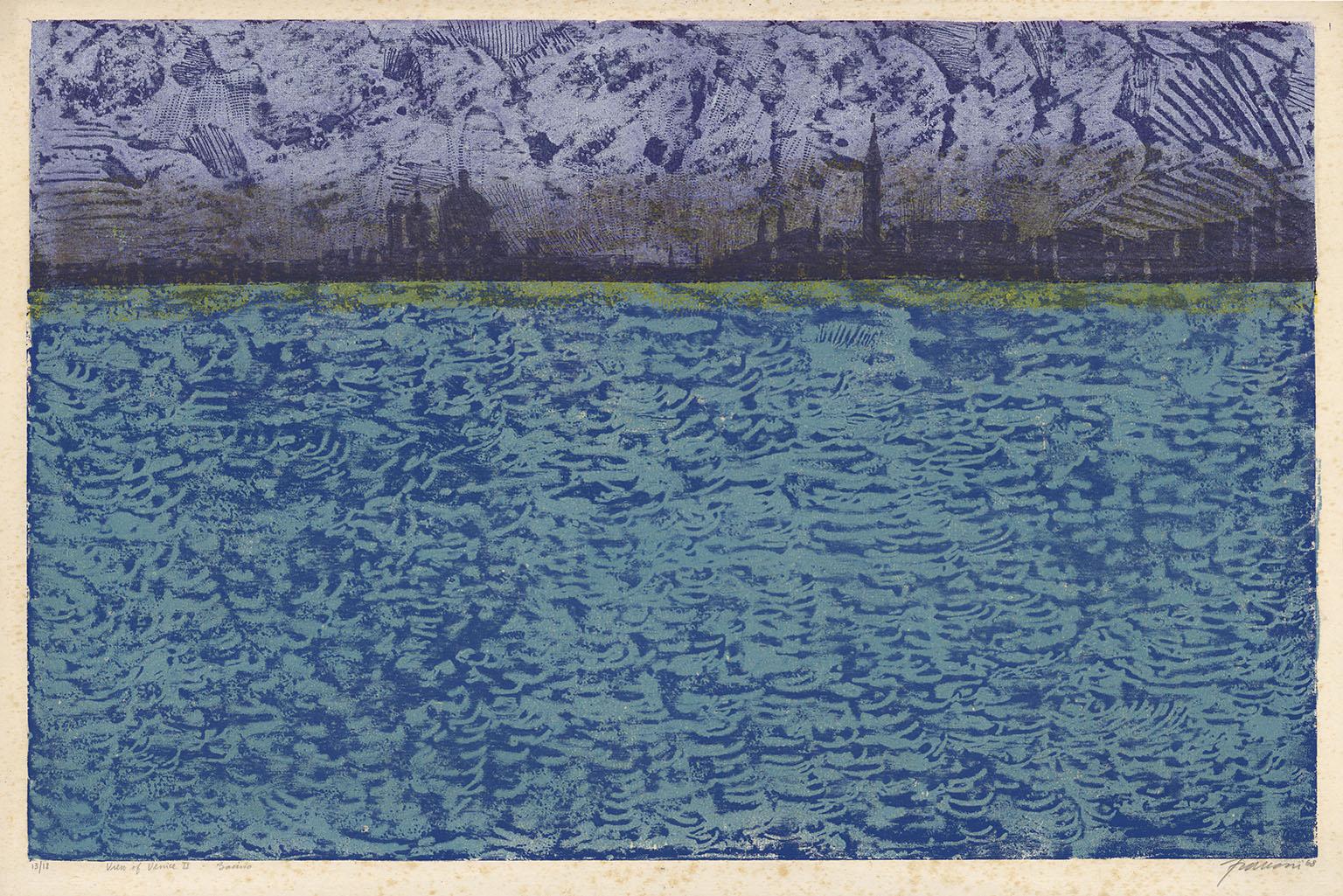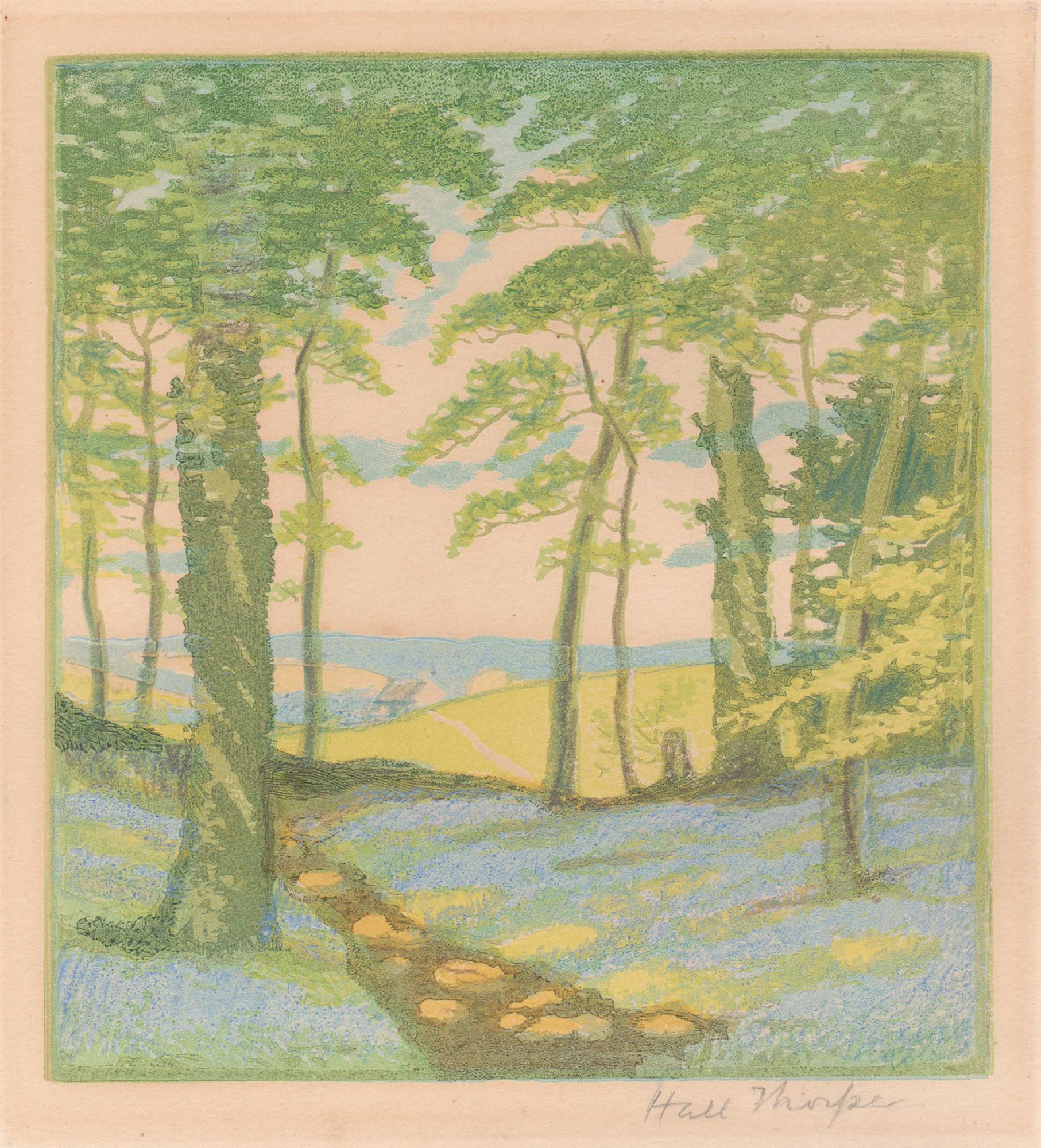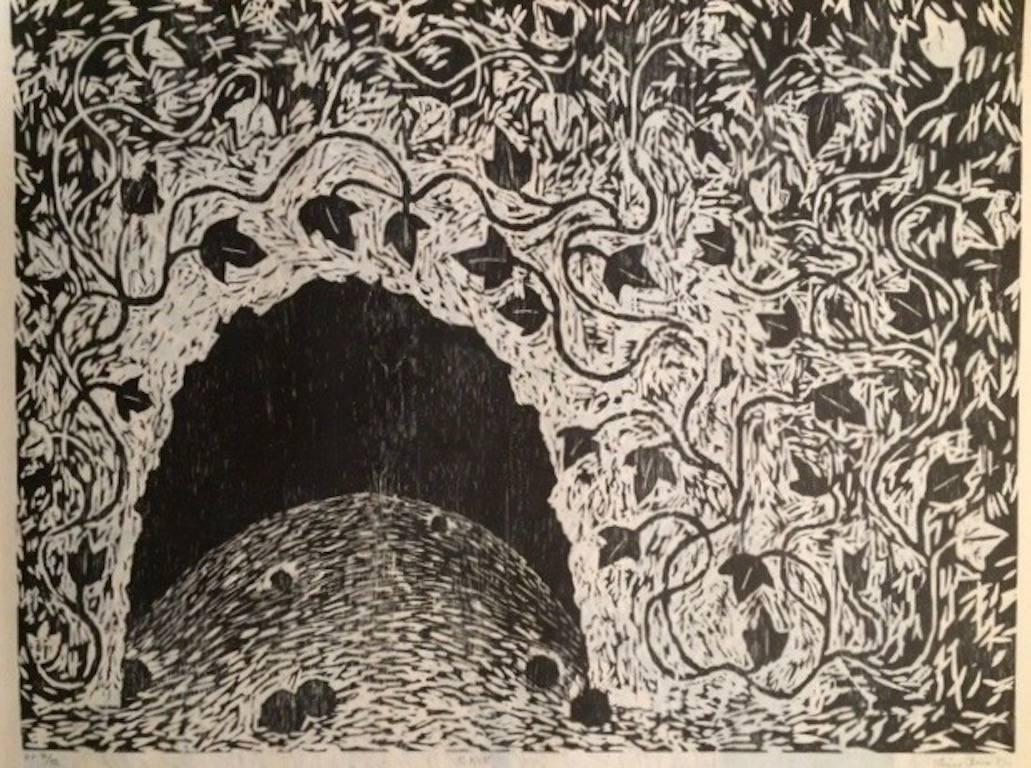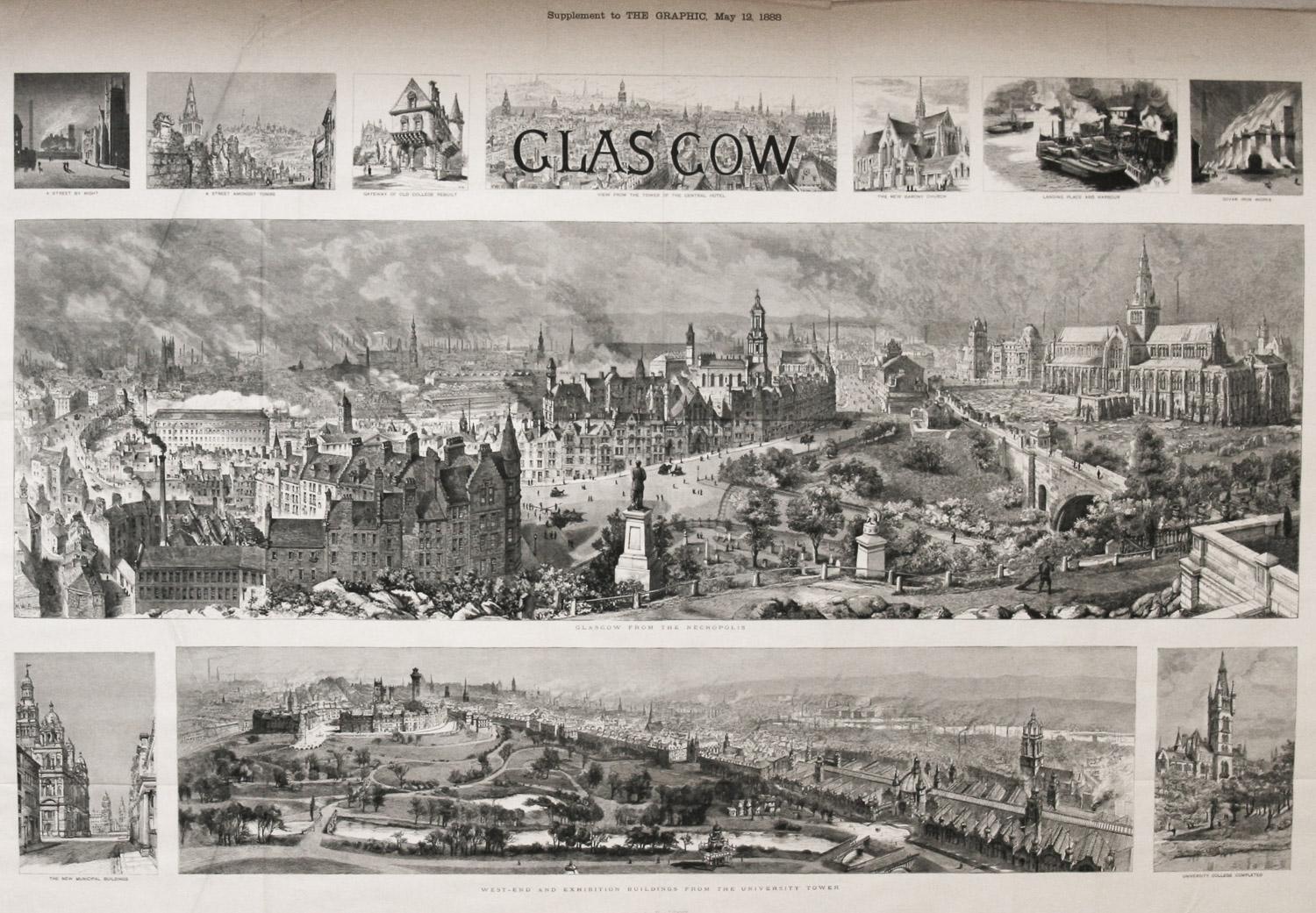Items Similar to San Francisco Sicilian and Italian Fishermen: A 19th C. Hand-colored Woodcut
Want more images or videos?
Request additional images or videos from the seller
Henry François FarnySan Francisco Sicilian and Italian Fishermen: A 19th C. Hand-colored Woodcut 1889
1889
About the Item
This is a framed hand-colored woodcut engraving entitled "Sicilian and Italian Fisherman's Dock - San Francisco", created by Henry François Farny and published in Harper's Weekly in 1889. It depicts fisherman talking on a San Francisco dock, one holding a basket of fish. One fisherman is asleep on the left near a crab on the the wood dock. Several fisherman are working with their catch or sit in their boats, relaxing after their day of fishing. The masts of a tall ship is seen in the background extending above another dock.
This beautifully colored and framed original 19th century woodcut engraving is presented in a dark brown wood faux bark frame with a cream-colored mat and it is glazed with UV protected conservation glass. All materials used are archival. The print has a central vertical fold, as issued. It is in excellent condition.
Henry François Farny (1847-1916) was an American painter and illustrator whose parents emigrated from France. His work often depicted the common man and frequently the life of Native Americans in 19th-century United States.
- Creator:Henry François Farny (1847 - 1916, American)
- Creation Year:1889
- Dimensions:Height: 21.13 in (53.68 cm)Width: 27.25 in (69.22 cm)Depth: 1.13 in (2.88 cm)
- Medium:
- Period:
- Condition:
- Gallery Location:Alamo, CA
- Reference Number:
About the Seller
5.0
Vetted Seller
These experienced sellers undergo a comprehensive evaluation by our team of in-house experts.
Established in 2011
1stDibs seller since 2019
234 sales on 1stDibs
Typical response time: 1 hour
- ShippingRetrieving quote...Ships From: Alamo, CA
- Return PolicyA return for this item may be initiated within 7 days of delivery.
More From This SellerView All
- "A Game of Lacrosse": A Hand-colored 19th Century Woodcut Engraving by HallLocated in Alamo, CAA colorful and attractive hand-colored 19th century woodcut engraving entitled "A Game of Lacrosse" after a drawing by W. H. Hall. It was published in New York in Harper's Weekly on May 10, 1884. It depicts a scene from an intense lacrosse game. This hand-colored woodcut engraving is presented in a red mat that measures 16" high x 20.63" wide. The sheet measures 10.63" high x 15.88" wide. There is a central fold, as issued. The print is in excellent condition. Lacrosse is the oldest sport in North America, possibly originating as far back as the 1400's. The sport was first invented by Native Americans, who originally played it as a means to toughen braves for war or to settle tribal disputes. It was played by between 100 and 1,000 participants at a time. There were no strict boundaries and the game could cover miles and take days to complete. It was very violent with many injuries, which were sometimes fatal. The game was unknown to whites until the 17th century when a Jesuit priest observed Heron Indians playing it. He thought the stick and netting resembled the "crosier" carried by bishops during religious ceremonies, This led to the name "la crosse". A Canadian dentist standardized the rules of the game in 1867 and the 1st college team was created at New York University in 1877. The game gained national attention and popularity in 1956 when the Hall-of-Fame football player Jim Brown...Category
1880s Landscape Prints
MaterialsWoodcut
- "California Gold Diggers": A 19th C. Hand-colored Woodcut Gold Rush SceneBy John AndrewLocated in Alamo, CAThis is a framed hand-colored woodcut engraving entitled "California Gold Diggers - A Scene From Actual Life At The Mines" created by John Andrew and publi...Category
Mid-19th Century Landscape Prints
MaterialsWoodcut
- Cartusia Bruxellensis Monastery in Brussels: A 17th C. Hand-colored EngravingBy Lucas Vorsterman the YoungerLocated in Alamo, CAThis is a 17th century hand-colored copperplate engraving entitled "Cartusia Bruxellensis" by Lucas Vorsterman, the Younger, after a drawing by Jacob van Werden or Jacques van Weerden, published in 1659 in Antonius Sanderus' book 'Chorographia sacra Brabantiae sive celebrium aliquot in ea provincia ecclesiarum et coenobiorum descriptio . . . Brussel' (A sacred chorography of Brabant, or a description of several famous churches and convents in that province). It also appeared in other publications by Sanderus. In the 17th century, Brussels was within the Duchy of Brabant. This engraving depicts a bird's-eye view of the Scheut Carthusian Monastery in Brussels. Scheut is a district of Anderlecht, a municipality of Brussels, Belgium. The monastery housed monks, who took a vow of silence, in 20 rooms. There is a central courtyard with trees and shrubs. Monks are depicted strolling along its pathways. The cells for the friars are in the middle the cloister. There are people along the streets in the foreground and to the right of the large, imposing monastery. Some are on horseback, others are walking. In the lower right, what appears to be a dog pulls a small cart containing barrels, possibly of beer or wine. Districts and neighborhoods are labelled in the background, including Scheut, Anderlecht and Ransfort. A very ornate cartouche in the lower left contains Latin and the artist's attribution. Another decorative cartouche in the upper central area contains the title. This beautifully hand-colored and detailed engraving is printed on laid, chain-linked paper with wide, full margins. The sheet measures 17.25" high and 21.25" wide. It has Latin text on the verso. It has a central vertical fold, as issued, which is reinforced on the verso. Two small spots in the lower margin may actually represent drops of watercolor paint used to color the engraving. It is otherwise in very good condition. Antonius Sanderus (1586-1664) was a Flemish Catholic cleric and historian. He was born "Antoon Sanders", but Latinized his name like many writers and scholars of his time. He was the author of several books, including 'Chorographia Sacra Brabantiae', which was illustrated with this engraving. Lucas Vorsterman the Younger (1624-between 1666 & 1676) was a Flemish Baroque engraver and draughtsman. He produced engravings after the work of contemporary painters and for books by Antwerp publishers. Jacob van Werden or Jacques van Weerden (active 1643-1669), was a Flemish draughtsman, cartographer, military engineer and archer who was active in the Habsburg Netherlands. His drawings were used as designs for prints executed by various printmakers. He worked on maps, topographical views, historical scenes, portraits and book illustrations. He had a career as a military engineer and a member of the guard of the Spanish King. He advised on various military engineering projects and was an engineer of the Spanish army...Category
Mid-17th Century Old Masters Landscape Prints
MaterialsEngraving
- L'Isle de France: A Hand-colored 17th Century Map by De WitBy Frederick de WitLocated in Alamo, CAThis colorful and detailed 17th century hand-colored copperplate map by Frederick De Wit was published in Amsterdam between 1666 and 1760. The map depicts the Île-de-France, which is one of the ancient provinces of France. Paris is located in the center of the map, with Versailles to the southwest The map extends from Rouen in the west to Reims in the east. The area around Paris, the Véxin Français, was the original domain of the king of France. Other areas were ruled by French feudal lords. For example, the Véxin Normand area was the domain of the Duke of Normandy...Category
Early 18th Century Old Masters More Prints
MaterialsEngraving
- Ulysses Deriding Polyphemus: A Framed 19th C. Engraving After J. M. W. TurnerBy J.M.W. TurnerLocated in Alamo, CAThis beautiful 19th century framed hand-colored engraving/etching entitled "Ullyses Deriding Polyphemus" by Edward Goodall is based on an original 1829 painting by the renowned Briti...Category
Mid-19th Century Romantic Landscape Prints
MaterialsEngraving, Etching
- View of Emden, Germany: A 16th Century Hand-colored Map by Braun & HogenbergBy Franz HogenbergLocated in Alamo, CAThis is a 16th century original hand-colored copperplate engraved map of a bird's-eye View of Embden, Germany entitled " Emuda, vulgo Embden vrbs Frisia orientalis primaria" by Georg Braun & Franz Hogenberg, in volume II of their famous city atlas "Civitates Orbis Terrarum", published in Cologne, Germany in 1575. This is a beautifully colored and detailed map of Emden, a seaport in northwestern Germany, along the Ems River and perhaps portions of over Dollart Bay, near the border with the Netherland. The map depicts a bird's-eye view of the city from the southwest, as well as a view of the harbor and an extensive system of canals. Numerous ships of various sizes, as well as two rowboats containing numerous occupants are seen in the main waterway in the foreground and additional boats line two canals in the center of the city. Two men and two women are shown on a hill in the foreground on the right, dressed in the 16th century style of nobility. Two ornate crests are included in each corner. A title strap-work cartouche is in the upper center with the title in Latin. The crest on the right including Engelke up de Muer (The Little Angel on the Wall) was granted by Emperor Maximilian I in 1495. This is an English translation of an excerpt of Braun's description of Embden: "In Emden, the capital of East Frisia, rich merchants live in very fine houses. The city has a broad and well-situated harbour, which in my opinion is unique in Holland. Frisia and the whole of the Netherlands, for the ships can anchor here right under the city walls. They have also extended the harbour as far as the New Town, so that up to 400 ships can now find shelter here when the sea is rough." The emphasis on the harbor and waterways within the city highlights the importance of Emden's place as a seaport at this time. Embden developed from a Dutch/Flemish trading settlement in the 7th-8th centuries into a city as late as late 14th century. In 1494 it was granted staple rights, and in 1536 the harbour was extended. In the mid-16th century Emden's port was thought to have the most ships in Europe. Its population then was about 5,000, rising to 15,000 by the end of the 16th century. The Ems River flowed directly under the city walls, but its course was changed in the 17th century by the construction of a canal. Emden has canals within its city limits, a typical feature of Dutch towns, which also enabled the extension of the harbor. In 1744 Emden was annexed by Prussia and is now part of Germany. It was captured by French forces in 1757 during the Seven Years' War, but recaptured by Anglo-German forces in 1758. During the Napoleonic French era, Emden and the surrounding lands of East Frisia were part of the short-lived Kingdom of Holland. References:Van der Krogt 4, 1230, State 2; Taschen, Braun and Hogenberg...Category
16th Century Old Masters Landscape Prints
MaterialsEngraving
You May Also Like
- View of Venice I - San GiorgioBy Antonio FrasconiLocated in New York, NYAntonio Frasconi created the color woodcut entitled "View of Venice I – San Giorgio" in 1968. It is signed, titled, dated, and inscribed “17/20” in pencil. The paper size is 24 x 36 ...Category
1960s American Modern Landscape Prints
MaterialsWoodcut
- View of Venice II - BacinoBy Antonio FrasconiLocated in New York, NYAntonio Frasconi created the color woodcut entitled "View of Venice II – Bacino" in 1968. It is signed, titled, dated, and inscribed “13/18” in pencil. The paper size is 24 x 36 inch...Category
1960s American Modern Landscape Prints
MaterialsWoodcut
- Bluebell Wood, John Hall Thorpe colour woodcut, c1920By John Hall ThorpeLocated in Melbourne, VictoriaColour woodcut. C1922.Signed in pencil below the image. Hall Thorpe's colourful and decorative woodcuts were very popular in the 1920s and 1930s. He was ...Category
1920s Art Nouveau Landscape Prints
MaterialsWoodcut
- CaveBy Louisa ChaseLocated in New York, NYLouisa Chase was born in Panama City, Panama. Seven years later, her family moved to Lancaster, Pennsylvania. She studied painting and sculpture at Syracuse University and at the Yal...Category
Late 20th Century Contemporary More Prints
MaterialsWoodcut
- Bird's Eye View of Glascow 1888 original wood engraving from The GraphicLocated in Paonia, COBird’s Eye View of Glascow original 1888 wood engraving is from The Graphic by H.W. Brewer who was well known for his aerial views of topographical panoramas. He was also the fa...Category
1880s Realist Landscape Prints
MaterialsWoodcut
- Low TideBy Hiroki MorinoueLocated in Lyons, COColor woodcut, Edition 30 The left panel of Low Tide captures the play of light on water with abstracted colorful reflections. The right panel depicts a tr...Category
21st Century and Contemporary Contemporary More Prints
MaterialsWoodcut
Recently Viewed
View AllMore Ways To Browse
Antique Brown Wood
19th C French Frame
Tall Ships
Antique San Francisco
San Francisco Antique
19th Hand Colored Engraving
Antique Fisherman
19th C Basket
Woodcut Man
Antique Bark
Hand Colored Italian Engraving
Hand Holding Basket
Antique Native American Prints
French Fisherman
Antique Prints San Francisco
Crabber Glass
Native American Engraving
Hand Colored Fish
